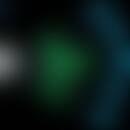Synonym(s)
Th2 immune response
DefinitionThis section has been translated automatically.
General informationThis section has been translated automatically.
The defense mechanisms of the immune system are divided into an innate (natural) immune response directed against all substances recognized as foreign to the body and an acquired (adaptive) one, in which antigen-specific cells and antibodies against specific allergens/antigens/pathogens are produced. In both systems complex, mutually influencing and regulating cell populations are active and dependent on the type and structure of the antigens. Both defence systems each have a cellular and humoral component.
Note(s)This section has been translated automatically.
The fully human antibody Dupilumab (Dupixent®) inhibits the key mediators of Th-2 inflammation (IL-4/13) by means of dual receptor blockade.



